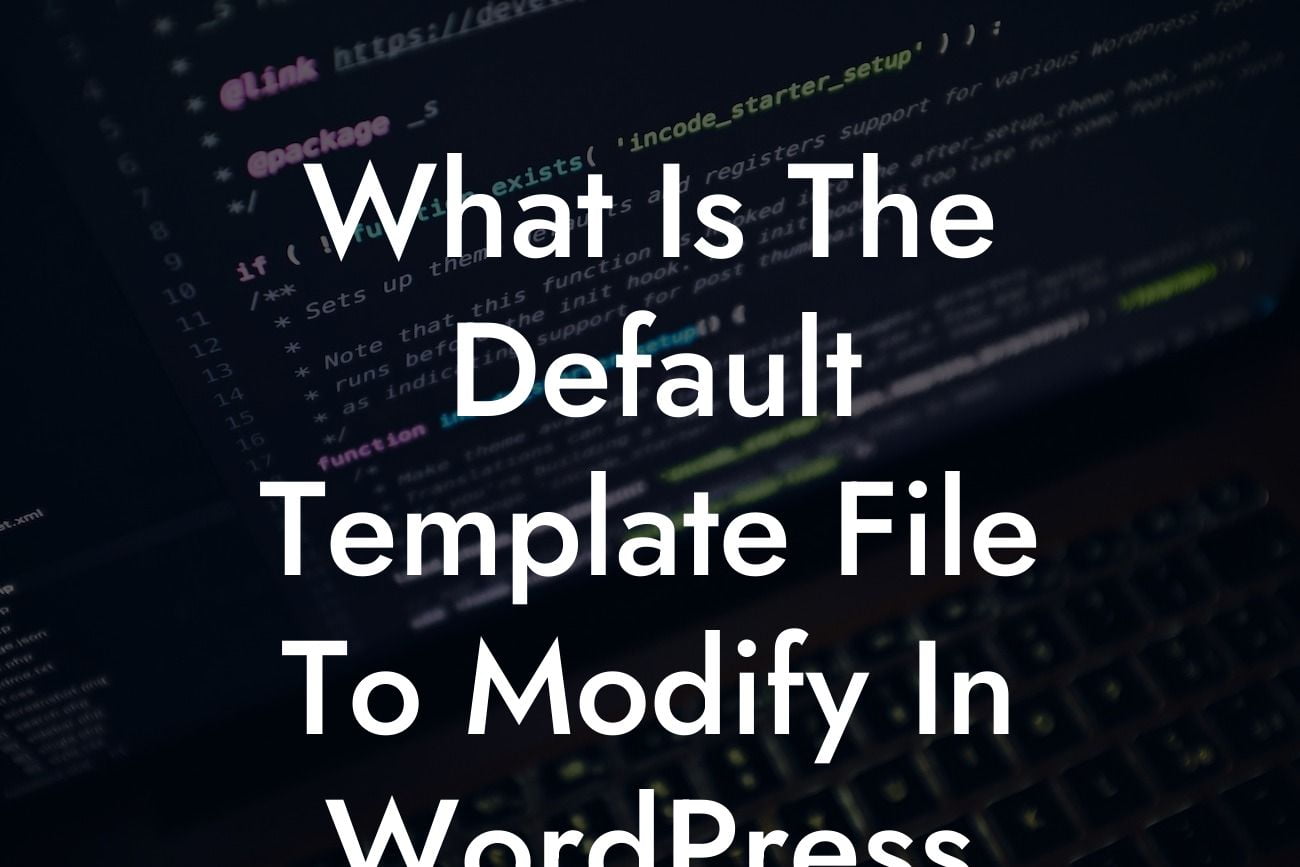Have you ever wondered how to make your WordPress website stand out from the crowd? As a small business owner or entrepreneur, it's crucial to have a unique online presence that resonates with your target audience. Luckily, WordPress provides a flexible and customizable platform that allows you to modify various aspects of your website. In this article, we'll dive into the topic of the default template file to modify in WordPress. By understanding this key element, you'll be on your way to creating a truly extraordinary website for your business.
When it comes to customizing your WordPress website, knowing which template file to modify is essential. The default template file that you'll typically work with is called "index.php". This file is the backbone of your website, controlling the layout and overall design. However, keep in mind that modifying the index.php file directly can be risky, as any mistakes might break your site. Therefore, it's always recommended to create a child theme before making any adjustments to the default template file.
Within the "index.php" file, you'll find several crucial elements you can modify to reflect your brand and unique style. These include the header, footer, sidebar, and content areas. By navigating through the file's structure, you can easily locate these sections and make alterations using HTML, CSS, or PHP.
To make your modifications more organized and easily maintainable, dividing your code into specific sections using appropriate headings and lists is highly recommended. You can utilize H2, H3 tags to create headings for different areas like header, footer, or sidebar. Additionally, bullet point and ordered lists can be used to effectively present information or instructions.
What Is The Default Template File To Modify In Wordpress Example:
Looking For a Custom QuickBook Integration?
Let's say you want to customize the header section of your WordPress website. You can locate the relevant code within the "index.php" file and start making adjustments. For instance, you might want to change the logo image, add social media icons, or even modify the navigation menu. By carefully modifying the HTML or PHP code within the header section, you can achieve your desired changes.
Congratulations! You have gained valuable insights into the default template file in WordPress. Now it's time to put your newfound knowledge into action. Consider exploring DamnWoo's range of awesome WordPress plugins designed exclusively for small businesses and entrepreneurs. With our plugins, you can take your online presence to new heights and supercharge your success. Don't forget to share this article with others who might find it helpful and check out our other guides for more valuable tips and tricks. Remember, with DamnWoo, you can embrace the extraordinary and say goodbye to cookie-cutter solutions.













